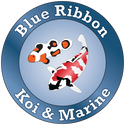When it comes to adding a touch of elegance and natural beauty to your reef tank, the Heliofungia Actiniformis, commonly known as the Plate Coral or Long Tentacle Plate Coral, is a captivating choice.
This free-living stony coral boasts a saucer-shaped appearance, single polyp structure, and mesmerizing anemone-like tentacles. In this article, we will delve into the fascinating world of Heliofungia actiniformis, its natural habitat, suitable tank conditions, and tips for maintaining its health. Additionally, we will explore the benefits of incorporating organic elements such as Caulerpa, Mangrove, and Chaeto to enhance its well-being.
Natural Habitat and Range:
Heliofungia actiniformis is naturally found in the Indian Ocean, ranging from southeastern India to the tropical western Pacific, including areas from Australia north to Southern Japan. In their natural environment, these corals inhabit fairly shallow soft sand and coral rubble zones on reef slopes, lagoon flats, and interconnected sandy reef areas. They thrive in areas protected from strong wave motion, typically at depths ranging from 3 to 85 feet (1 to 25 meters).
Tank Requirements and Husbandry:
To ensure the well-being of your Heliofungia actiniformis coral, it is crucial to recreate its natural environment within your reef tank. Here are some essential guidelines:
-
Tank Setup: Place the coral on sandy or coarse substrate in an area that receives bright light and moderate water movement. Provide adequate space to prevent contact with other corals, as Heliofungia actiniformis is sensitive to injury.
-
Lighting: Heliofungia actiniformis requires a moderate to high light intensity. Consider using lighting systems with a PAR (Photosynthetically Active Radiation) rating of 300-400+ to provide sufficient illumination.
-
Water Parameters: Maintain stable water conditions within the following ranges:
- Temperature: 74 - 83°F (23 - 28°C)
- Specific Gravity: 1.023 - 1.025
- pH: 8.0 - 8.4
- Calcium (Ca): 380 - 430 mg/l
- Alkalinity: 2.5 - 3.0 meq/l
- Phosphate (PO4): <0.05 mg/l
- Magnesium (Mg): approx. 1350 mg/l (relate to specific gravity)
- Strontium (Sr): 8 - 10 mg/l
-
Feeding: Although Heliofungia actiniformis is photosynthetic, it benefits from regular feeding. Offer meaty foodstuffs such as fortified brine shrimp, mysis shrimp, and products containing Cyclop-eeze or similar items at least once a week. Hand feeding is recommended, especially during nighttime hours when the tentacles are most prominent.
Incorporating Organic Elements for Enhanced Health:
To promote the overall health and vitality of your Heliofungia actiniformis coral, consider integrating certain organic elements into your tank. Here are some beneficial options:
-
Caulerpa: Caulerpa is a type of organic element that can contribute to a thriving coral ecosystem. It aids in enhancing water quality, nutrient absorption, and overall coral health. By incorporating Caulerpa, you create a more stable and balanced environment for your coral.
-
Mangrove: Mangrove plants are excellent natural filtration systems that can help maintain water quality by absorbing excess nutrients and providing a habitat for beneficial microorganisms. The roots of mangroves also act as shelters
for small invertebrates, offering additional hiding spots and increasing the overall biodiversity of your tank.
-
Chaeto: Chaeto, short for Chaetomorpha algae, is a type of macroalgae that can be beneficial when kept in a refugium or sump connected to your main tank. Chaeto helps to regulate nutrient levels by consuming nitrates and phosphates, thus reducing the risk of algae blooms and promoting a healthier environment for your coral.
By incorporating these organic elements, you create a more holistic and sustainable ecosystem for your Heliofungia actiniformis coral. These elements contribute to water quality, nutrient balance, and the overall well-being of your tank inhabitants.
North Sulawesi and Heliofungia actiniformis:
North Sulawesi, known for its rich marine biodiversity, provides an ideal environment for the growth and maintenance of Heliofungia actiniformis corals. The region offers suitable conditions, including soft sand and coral rubble zones on reef slopes and lagoon flats. The interconnected sandy reef areas, protected from strong wave motion, create the perfect habitat for these corals to thrive.
When collecting specimens from North Sulawesi, it is essential to prioritize sustainable practices. Choose healthy, undamaged corals and handle them with care during the collection process. Avoid removing specimens with inflated flesh from the water to prevent damage. Gently shaking the coral to allow the flesh to retract before removal is recommended.
Always remember to source your specimens responsibly and prioritize sustainable practices when adding Heliofungia actiniformis to your aquarium. With proper care and attention, this coral will bring beauty and wonder to your underwater world.

